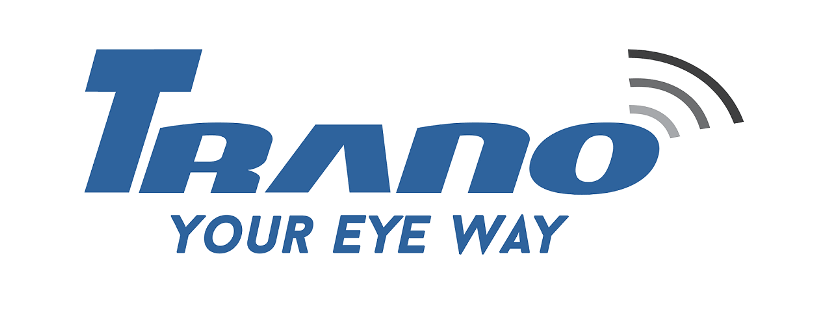Description

Atera

Freshservice
Comprehensive Overview: Atera vs Freshservice
Sure, let's delve into Atera and Freshservice, both of which are prominent tools in the IT service management and remote monitoring and management spaces.
Atera
a) Primary Functions and Target Markets
Primary Functions:
- Remote Monitoring and Management (RMM): Atera provides tools for monitoring IT assets, managing software deployments, and automating routine tasks.
- Professional Services Automation (PSA): It includes features for ticketing, customer relationship management, and billing.
- Network Discovery: Allows users to detect devices within a network and manage them.
- Patch Management: Automates the update and patching process to ensure systems are secure.
- IT Automation: Facilitates automated IT tasks such as maintenance, scripting, and server management.
Target Markets:
- Managed Service Providers (MSPs): Atera targets small to mid-sized MSPs, offering comprehensive IT management and automation in a single platform.
- SMBs (Small and Medium-Sized Businesses): It also targets internal IT teams within SMBs looking for robust, yet affordable IT management solutions.
b) Market Share and User Base
Atera is popular among small to mid-tier MSPs primarily due to its pricing model and ease of use. However, in terms of overall market share, it remains relatively niche compared to larger enterprise-focused solutions like ServiceNow. Its user base is growing, particularly among businesses looking for an all-in-one solution with minimal setup complexities.
c) Key Differentiating Factors
- Pricing Model: Atera uses a per-technician pricing model with unlimited devices, which is attractive to MSPs.
- Simplicity and Integration: Known for low entry barriers and easy integration, focusing primarily on MSP needs rather than extensive enterprise ITSM.
- Cloud-Based Solution: Being entirely cloud-based, Atera allows technicians to work from anywhere, offering a significant advantage in remote work settings.
Freshservice
a) Primary Functions and Target Markets
Primary Functions:
- IT Service Management (ITSM): Provides incident management, service catalog, and request fulfillment services.
- Asset Management: Helps in tracking and managing hardware and software assets.
- Change Management: Facilitates the approval and management of change requests in IT systems.
- Project Management: Offers capabilities for managing IT projects within a single platform.
- Automation: Incorporates workflow automation to streamline IT processes.
Target Markets:
- SMBs and Enterprises: Freshservice is suitable for both small businesses and large enterprises looking for a comprehensive ITSM tool.
- IT Departments: Commonly used by internal IT teams focusing on delivering robust service management and support.
b) Market Share and User Base
Freshservice, part of the Freshworks' suite, enjoys larger visibility and market penetration compared to Atera, especially in sectors seeking ITSM solutions. It has a substantial user base across various industries, including education, healthcare, and technology, leveraging its broader ITSM capabilities.
c) Key Differentiating Factors
- User Experience: Freshservice is renowned for its intuitive user interface and user-friendly experience, catering to a diverse range of non-technical users.
- Strong Integrations: Offers extensive integrations with other Freshworks products and third-party applications, making it a versatile part of a broader business software ecosystem.
- AI and Automation Capabilities: Includes robust AI features for workflow automation, providing advanced service desk functionalities.
Comparative Analysis
Market Share and Audience Focus:
- Atera is more focused on MSPs, while Freshservice has a broader target, including enterprises and internal IT teams.
- Freshservice has a larger market presence due to its ITSM focus, appealing to a varied range of industries.
Product Differentiation:
- Atera's unlimited devices pricing model is a key differentiator for MSPs looking to manage costs effectively.
- Freshservice provides a comprehensive service management toolkit, appealing to organizations seeking enterprise capabilities.
Ease of Use and Integration:
- Atera emphasizes easy integration and low-maintenance solutions tailored for MSPs.
- Freshservice offers user experience excellence and stronger integrations with a multitude of business applications.
Both tools provide substantial value but cater to slightly different segments, aligning with the distinct needs of their respective users.
Contact Info

Year founded :
2011
Not Available
Not Available
Israel
http://www.linkedin.com/company/atera-id

Year founded :
2011
Not Available
Not Available
United States
http://www.linkedin.com/company/freshserviceitconsulting
Feature Similarity Breakdown: Atera, Freshservice
When comparing Atera and Freshservice, both of which are popular IT management and service desk solutions, it's important to evaluate their core features, user interfaces, and any unique functionalities that differentiate them.
a) Core Features in Common
Both Atera and Freshservice are designed to facilitate IT service management (ITSM) and share several core features:
-
Ticketing System: Both platforms offer robust ticket management with features like ticket prioritization, escalation, and tracking.
-
Knowledge Base: They provide tools to create and maintain a knowledge base for self-service support to reduce the ticket inflow.
-
Automation & Workflow: Both solutions enable automation of repetitive tasks and workflows to improve efficiency and reduce manual errors.
-
Reporting & Analytics: They offer reporting and analytics tools to track IT performance and service quality, helping organizations make data-driven decisions.
-
Asset Management: Atera and Freshservice allow tracking and managing IT assets within an organization, including hardware and software inventory.
-
Remote Support: Both offer remote access capabilities, although Atera is more focused on remote monitoring and management (RMM).
-
Integration Capabilities: They support integration with a range of third-party applications and systems, enhancing their functionality.
b) User Interface Comparisons
-
Atera: Atera’s user interface typically focuses on simplicity and ease of use, specially tailored for managed service providers (MSPs). The dashboard is clean, emphasizing functionality and quick access to monitoring tools and remote management capabilities.
-
Freshservice: Freshservice is known for aesthetics and user-friendly design, appealing to a broader range of customers, including those not in the MSP sector. It has a more vibrant UI with a modern feel, focusing on service desk and ITSM functionalities.
While both platforms prioritize usability, Freshservice might have a slight edge in terms of intuitive design, especially for users new to IT management tools.
c) Unique Features
-
Atera:
- RMM (Remote Monitoring and Management): Atera uniquely integrates RMM functionalities, providing comprehensive tools for continuous monitoring of IT infrastructure, which is crucial for MSPs.
- Network Discovery: Atera offers network discovery tools that are vital for identifying devices and managing them seamlessly through the platform.
-
Freshservice:
- Employee Onboarding: Freshservice provides specialized onboarding workflows that help automate and streamline the process of integrating new employees, which can be a significant advantage for HR departments.
- Gamification: To boost service desk efficiency, Freshservice includes gamification elements, which can enhance team motivation and productivity.
In conclusion, while Atera and Freshservice share many core ITSM features, they cater to slightly different audiences and needs, with Atera leaning more towards MSPs with its strong RMM capabilities, and Freshservice expanding its appeal with strong ITIL features and a more modern design, suitable for a variety of organizational setups.
Features

Not Available

Not Available
Best Fit Use Cases: Atera, Freshservice
Atera and Freshservice are both IT management and service solutions that cater to different needs and business contexts. Understanding their best-fit use cases involves examining the types of businesses or projects they serve best and how they align with different industries and company sizes.
Atera
a) Best Fit Use Cases for Atera:
- Types of Businesses/Projects:
- Managed Service Providers (MSPs): Atera is particularly well-suited for MSPs due to its comprehensive all-in-one IT management tools that include Remote Monitoring and Management (RMM), Professional Services Automation (PSA), and remote access capabilities. Its pricing model is based on technicians, not devices, which makes it cost-effective for MSPs managing multiple clients with numerous devices.
- Small to Medium-sized Businesses (SMBs): SMBs looking for a unified platform that covers various IT management aspects without having to integrate multiple vendors' solutions can benefit from Atera. Its simplicity and ease of use make it ideal for businesses without extensive IT resources.
- IT Departments within Larger Organizations: While primarily targeting MSPs and SMBs, Atera can also support internal IT teams that need robust remote support and monitoring tools.
d) Industry Verticals and Company Sizes:
- Industry Verticals: Atera is versatile and can serve multiple industries, such as healthcare, education, finance, and more, provided the focus is on IT support and infrastructure management.
- Company Sizes: Atera is most effective for small to medium-sized organizations or MSPs that prefer a technician-based pricing model for better scalability without increasing costs dramatically as the device count grows.
Freshservice
b) Preferred Use Cases for Freshservice:
- Types of Businesses/Projects:
- Internal IT Service Management (ITSM): Freshservice is ideal for organizations that need a robust IT Service Management solution focusing on ITIL-based processes. It provides features like incident management, change management, and a self-service portal that streamline IT service delivery.
- Enterprises with Complex IT Workflows: Large enterprises with more complex requirements and workflows stand to benefit from Freshservice's customizable automation and process management capabilities, which can be tailored to meet specific business workflows.
- Businesses Focusing on Service Desk Operations: Companies looking for a comprehensive service desk solution with a user-friendly interface and powerful automation to improve IT support operations.
d) Industry Verticals and Company Sizes:
- Industry Verticals: Freshservice serves industries such as IT, HR, facilities, and finance, where formalized service management processes are crucial. Its adaptability also makes it suitable for various other sectors, such as education and government.
- Company Sizes: Freshservice can cater to a wide range of company sizes, from small to large enterprises. However, its rich feature set is particularly beneficial for mid-sized to large organizations that require advanced ITSM capabilities and integrations with other business tools.
In summary, Atera is best suited for MSPs and SMBs needing comprehensive IT support in a cost-effective model, while Freshservice is ideal for organizations requiring more advanced IT service management and automation capabilities, including enterprises with complex service desk requirements. Each platform caters to a range of industries and company sizes, but their core functionalities make them more appealing based on specific operational needs and business strategies.
Pricing

Pricing Not Available

Pricing Not Available
Metrics History
Metrics History
Comparing undefined across companies
Conclusion & Final Verdict: Atera vs Freshservice
When considering Atera and Freshservice, both are robust platforms catering to IT management but with different strengths and target audiences.
Conclusion and Final Verdict
a) Best Overall Value:
The best overall value between Atera and Freshservice largely depends on the specific needs of the organization.
- Atera: Offers a comprehensive package for MSPs and IT professionals seeking a unified platform combining RMM, PSA, and remote access capabilities. It is highly cost-effective, particularly for smaller businesses or startups due to its all-in-one pricing model without per-device fees.
- Freshservice: Excels in IT service management (ITSM) and is ideal for organizations needing a more traditional and sophisticated ITIL-aligned service desk solution. It provides great flexibility and scalability, making it suitable for mid to large-sized enterprises.
Ultimately, Atera provides better value for smaller businesses looking for budget-friendly and consolidated IT management. Freshservice offers better value for larger organizations needing advanced ITSM features.
b) Pros and Cons:
Atera Pros:
- Unified Platform: Integrates RMM, PSA, ticketing, and remote access.
- Simple Pricing: Flat-rate pricing model makes budgeting straightforward, with no per-device cost.
- Ease of Use: Intuitive interface and easy deployment.
- Ideal for MSPs: Tailored features for Managed Service Providers.
Atera Cons:
- Advanced Features: Lacks some deep ITSM features present in dedicated ITSM solutions.
- Scalability Concerns: Larger companies might find its features limiting as needs grow.
Freshservice Pros:
- ITSM Excellence: Strong ITIL alignment with advanced features like change and asset management.
- Customizability: Highly customizable workflows and automation capabilities.
- User Interface: Intuitive design, enhancing user experience.
- Scalability: Suitable for medium to large organizations with complex requirements.
Freshservice Cons:
- Cost: Can be pricey compared to simpler solutions like Atera, especially for smaller businesses.
- Complexity: More complex setup and management might require additional training.
c) Recommendations:
-
For Small to Mid-sized MSPs or Businesses: Go with Atera if you need an all-in-one IT management solution that's budget-friendly and straightforward. It's particularly useful if your primary needs are basic IT management, proactive monitoring, and seamless remote support.
-
For Mid to Large-sized Enterprises: Opt for Freshservice if you need comprehensive ITSM capabilities, ITIL alignment, and a flexible, scalable solution that can grow alongside your organization's complexity and size.
-
Trial Both: Both platforms offer free trials, so it's recommended that decision-makers conduct hands-on testing with specific organizational use cases to better understand which solution aligns with their operational needs.
Overall, the decision should consider the scale of IT operations, budget constraints, and the depth of IT service management needed.
Add to compare
Add similar companies



